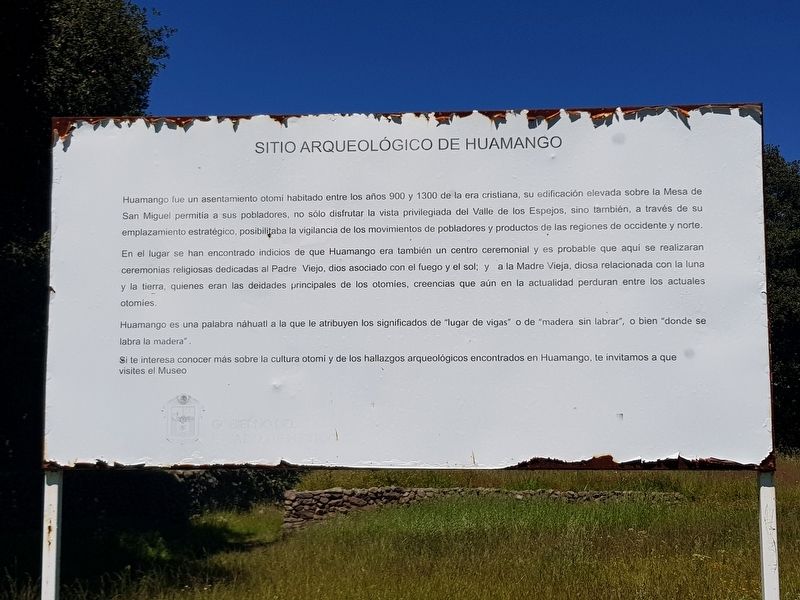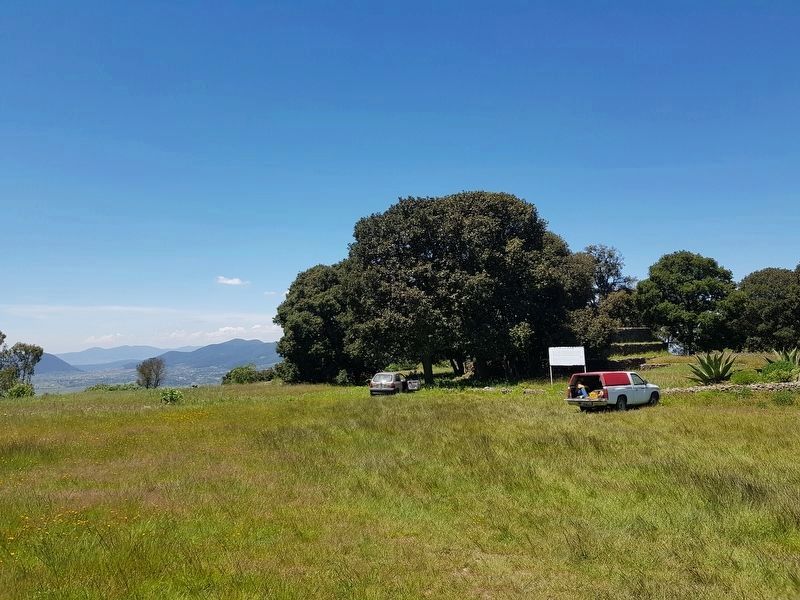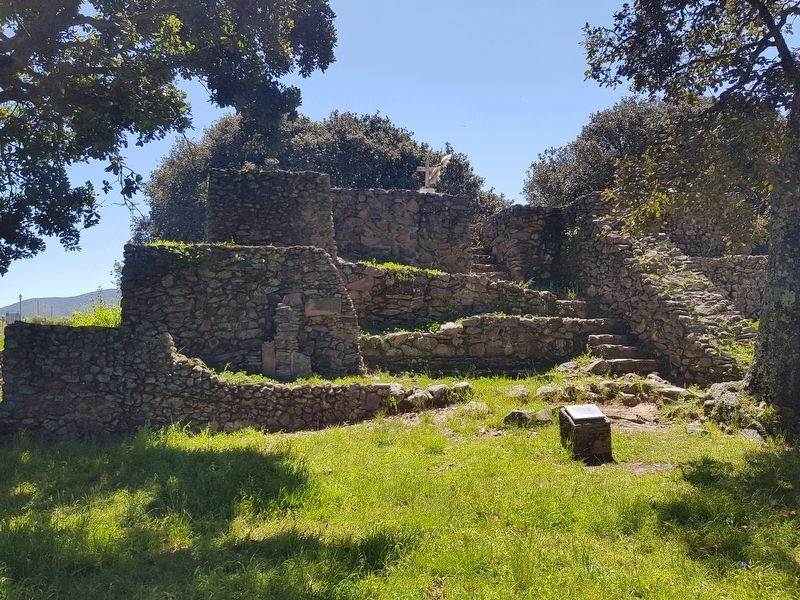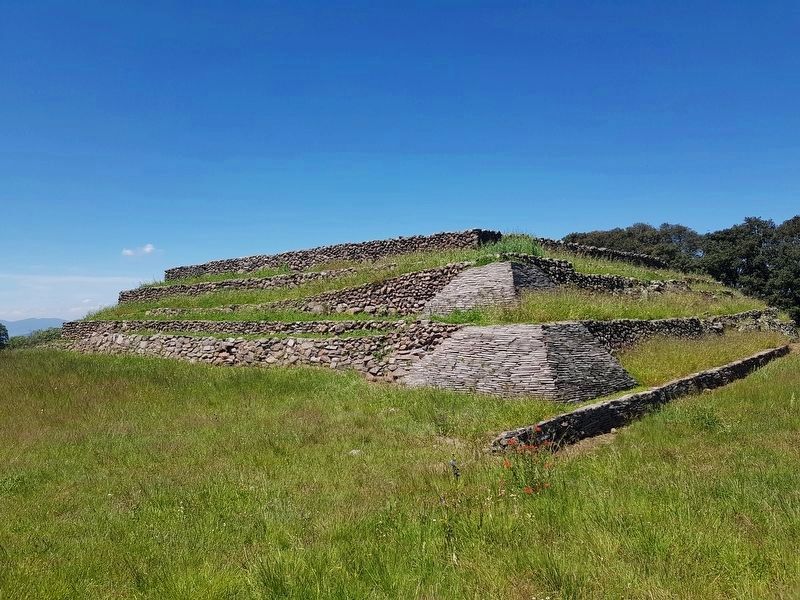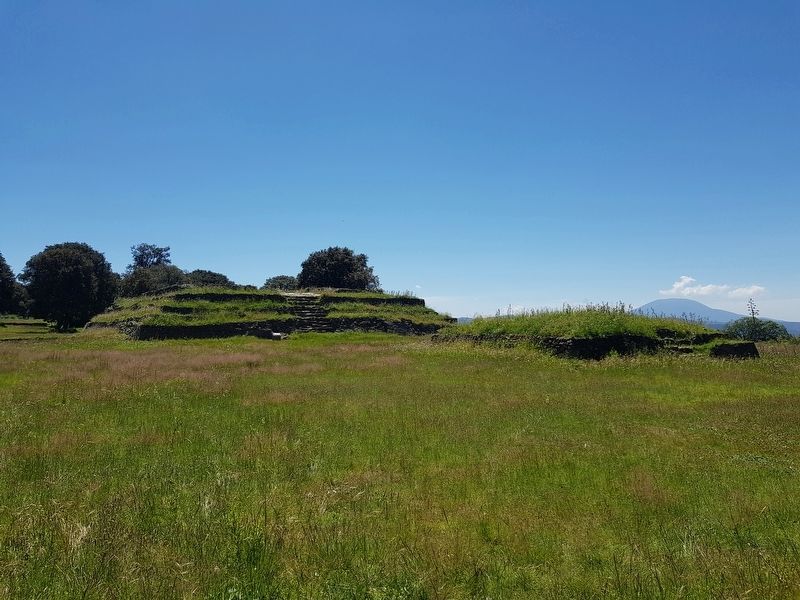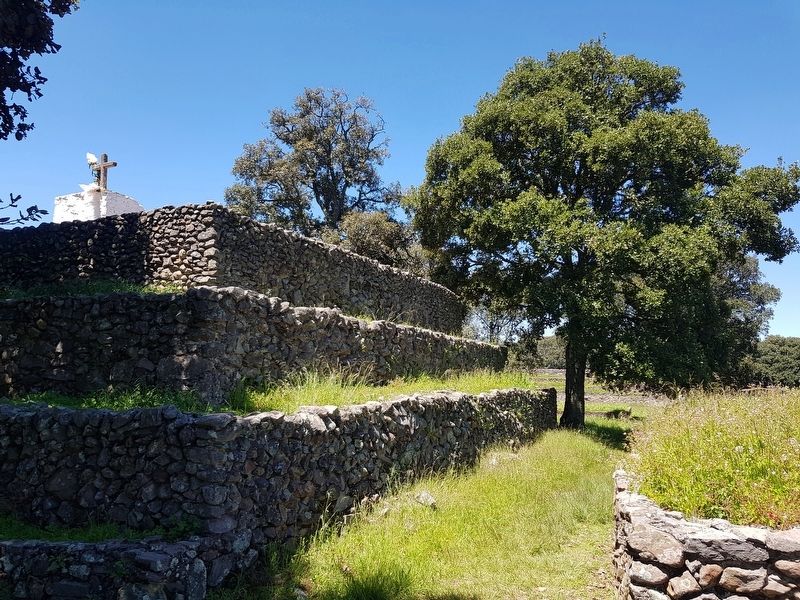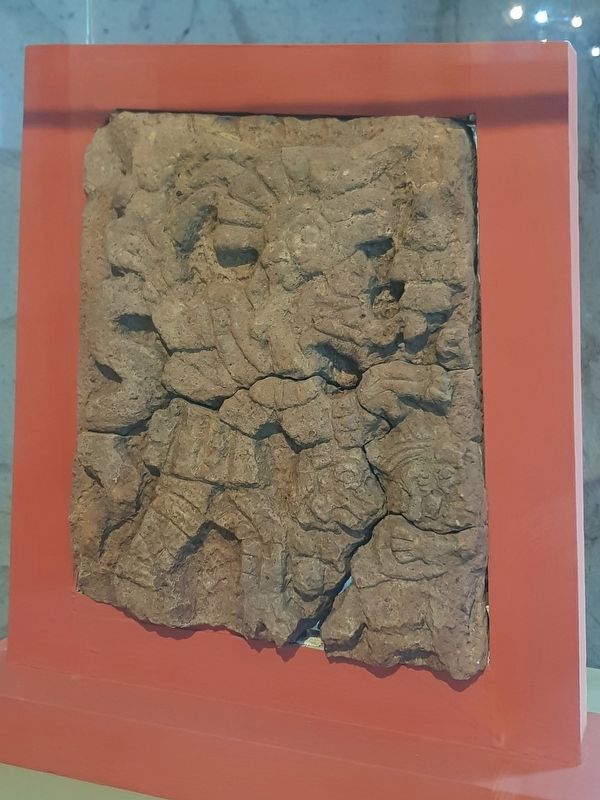Near Acambay, Mexico State, Mexico — The Central Highlands (North America)
Huamango Archaeological Site
Huamango fue un asentamiento otomí habitado entre los años 900 y 1300 de la era cristiana, su edificación elevada sobre la Mesa de San Miguel permitía a sus pobladores, no sólo disfrutar la vista privilegiada del Valle de los Espejos, sino también, a través de su emplazamiento estratégico, posibilitaba la vigilancia de los movimientos de pobladores y productos de las regiones de occidente y norte.
En el lugar se han encontrado indicios de que Huamango era también un centro ceremonial y es probable que aquí se realizararan ceremonias religiosas dedicadas al Padre Viejo, dios asociado con el fuego y el sol; y a la Madre Vieja, diosa relacionada con la luna y la tierra, quienes eran las deidades principales de los otomíes, creencias que aún en la actualidad perduran entre los actuales otomíes.
Huamango es una palabra náhuatl a la que le atribuyen los significados de “lugar de vigas” o de “madera sin labrar”, o bien “donde se labra la madera”.
Si te interesa conocer más sobre la cultura otomí y de los hallazgos arqueológicos encontrados en Huamango, te invitamos a que visites el Museo.
Haumango Archaeological Site
Huamango was an Otomí settlement inhabited between the years 900 and 1300 of the Christian era. Its elevated site on the Mesa de San Miguel allowed its inhabitants not only to enjoy the privileged view of the Valley of Mirrors, but also, through its strategic location, made it possible to monitor the movements of settlers and products from the western and northern regions.
There are indications that Huamango was also a ceremonial center and it is likely that religious ceremonies dedicated to the “Old Father”, a deity associated with fire and the sun, were held here. Other ceremonies were probably dedicated to the “Old Mother”, a deity related to the moon and the earth. These were the main deities of the Otomi and belief in them still exists today among the current Otomi.
Huamango is a Nahuatl word to which could mean the “place of the logs”, “unworked wood”, or “where the wood is carved.”
If you are interested in learning more about the Otomi culture and the archaeological objects found in Huamango, we invite you to visit the Museum.
Topics. This historical marker is listed in these topic lists: Anthropology & Archaeology • Churches & Religion • Native Americans. A significant historical year for this entry is 1300.
Location. 19°
58.729′ N, 99° 51.903′ W. Marker is near Acambay, Estado de Mexico (Mexico State). Marker can be reached from Camino a Huamango just east of Carretera Federal Mexicana (Route 57), on the left when traveling east. Touch for map. Marker is in this post office area: Acambay MEX 50345, Mexico. Touch for directions.
Other nearby markers. At least 8 other markers are within 5 kilometers of this marker, measured as the crow flies. Residential Platforms (within shouting distance of this marker); Mexican Independence, Revolution and Acambay Earthquake (approx. 3.4 kilometers away); Execution of Lindoro Cajiga (approx. 3.4 kilometers away); History of Acambay (approx. 3.4 kilometers away); The 1921 Acambay Earthquake (approx. 3.4 kilometers away); Otomíes of Acambay (approx. 3.4 kilometers away); Parish and Ex Convent of San Miguel Arcángel (approx. 3.4 kilometers away); Parish Church of San Miguel Arcángel (approx. 3.4 kilometers away). Touch for a list and map of all markers in Acambay.
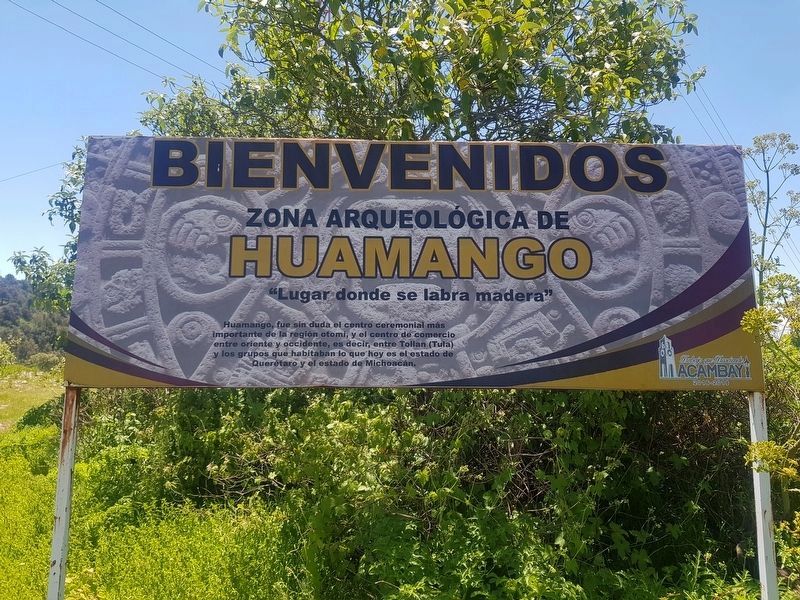
Photographed By J. Makali Bruton, September 1, 2019
7. Welcome sign to the Huamango Archaeological Site
Near the entrance to the site is this additional sign. However, the background of the sign appears to show the Aztec Sun Stone, which doesn't really have anything to do with this Otomí site. The sign reads:
Bienvenidos
Zona arqueológico de Huamango
“Lugar donde se labra madera”
Huamango, fue sin duda el centro ceremonial más importante de la región otomí, y el centro de comercio entre oriente y occidente, es decir, entre Tollan (Tula) y los grupos que habitaban lo que hoy es el estado de Querétaro y el estado de Michoacán.
Zona arqueológico de Huamango
“Lugar donde se labra madera”
Huamango, fue sin duda el centro ceremonial más importante de la región otomí, y el centro de comercio entre oriente y occidente, es decir, entre Tollan (Tula) y los grupos que habitaban lo que hoy es el estado de Querétaro y el estado de Michoacán.
Credits. This page was last revised on January 4, 2023. It was originally submitted on September 2, 2019, by J. Makali Bruton of Accra, Ghana. This page has been viewed 126 times since then and 18 times this year. Photos: 1, 2, 3, 4, 5, 6, 7, 8. submitted on September 2, 2019, by J. Makali Bruton of Accra, Ghana.
